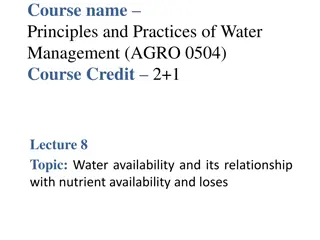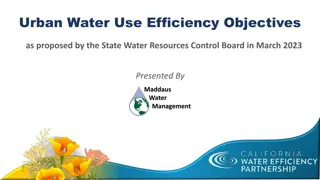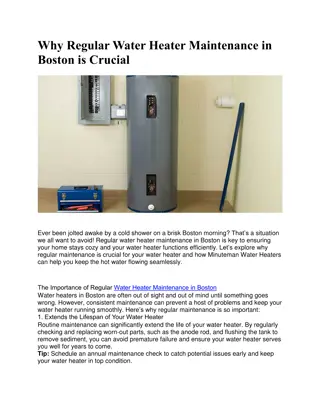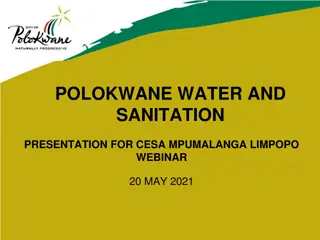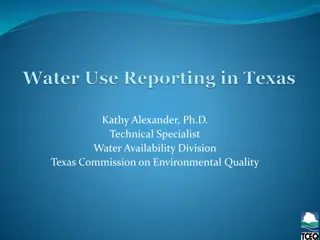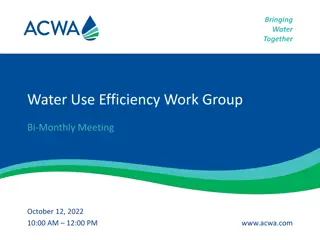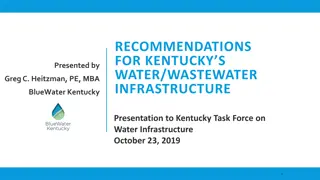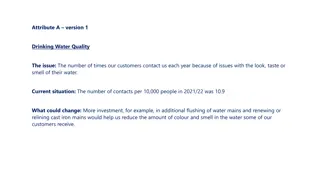
Path to Educational Equity in California
Explore the journey towards educational equity in California, focusing on the challenges and opportunities in supporting academic success for all students. Delve into initiatives like the Weighted Formula [LCFF] and Local Goals [LCAP], and address disparities in proficiency standards and NAEP results. Discover the importance of stakeholder engagement, accountability, and improving teacher preparation programs for a more equitable education system.
Download Presentation

Please find below an Image/Link to download the presentation.
The content on the website is provided AS IS for your information and personal use only. It may not be sold, licensed, or shared on other websites without obtaining consent from the author. If you encounter any issues during the download, it is possible that the publisher has removed the file from their server.
You are allowed to download the files provided on this website for personal or commercial use, subject to the condition that they are used lawfully. All files are the property of their respective owners.
The content on the website is provided AS IS for your information and personal use only. It may not be sold, licensed, or shared on other websites without obtaining consent from the author.
E N D
Presentation Transcript
Why Only Water? The Opportunity Institute www.theopportunityinstitute.org 1
Beyond the buzzword Source: ESSA: Guide for Advocates; Leadership Conference Education Fund http://civilrightsdocs.info/pdf/education/ESSA/ESSA-Guide.pdf 2
Beyond the buzzword: EQUITY Requires Parent, Family, and Community Engagement & Consultation Accountability for the Achievement of ALL Students Education al Equity Equitable Resources Aligned to Student Needs Easily Accessible and User Friendly Data Source: ESSA: Guide for Advocates; Leadership Conference Education Fund http://civilrightsdocs.info/pdf/education/ESSA/ESSA-Guide.pdf 3
Average NAEP Scale Scores by Why do Californians think the state is doing well, and leading? State (2015) 8th Grade Reading No excuses! Sure, CA has lots of immigrants and high child poverty. So are schools excused from supporting academic success for them, too? California From EdTrust.org and NCES
8th Grade Reading NCES.ed.gov
California is on the Right Path ? Weighted Formula [LCFF] Good formula, but is $ going to the right kids for the right reasons? Romantic, ideological, not warranted generally by experience or local capacity; almost no boldness for equity Local Goals [LCAP] LEAs must also examine school climate, parent and student engagement, course access, standards implementation . Priorities Beyond Outcomes Steep learning curve for most LEAs. No peer review or quality control; scarce technical assistance. Repackaging business as, not innovation. Local Plans [LCAP] Required, but it doesn t have to address anything important or be otherwise meaningful. How do we know it s being done well? Stakeholder Engagement Dashboard/ Accountability Rubric Will it include disparities? Will there be smart interventions? YES, but equitable access to the good stuff ? And California s proficiency standards and NAEP results are among the nation s worst. Common Core CCEE Woefully under-resourced; scatter-shot pilots instead of a system Transparency/Data California .. ?????? Licensing Great step forward. But we also need to demand changes for prep programs, and professional development. And address shortages! Teachers 6
Gaps in Average Scale Scores in CA Average NAEP Scores: 2015 8th Grade Reading Average NAEP Scores: 2015 8th Grade Math 280 295 290 275 285 270 280 265 275 260 270 265 255 260 250 255 245 250 240 245 235 240 Average NAEP Score Average NAEP Score White Students African American Students White Students African American Students EdTrust.org
In conclusion 21st Century Jim Crow The Opportunity Institute www.theopportunityinstitute.org 8



